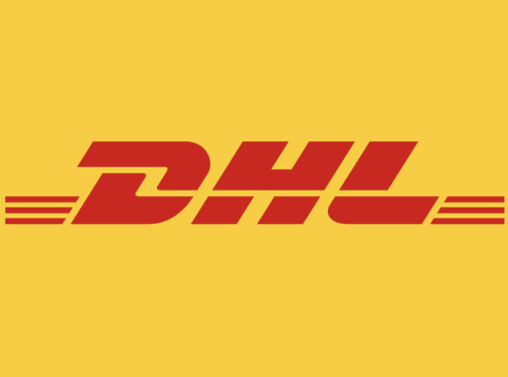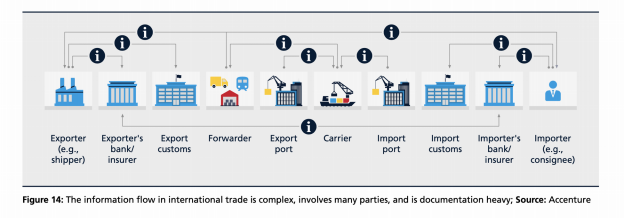BLOCKCHAIN SOLUTION DHL CASE STUDY

BLOCKCHAIN SOLUTION DHL CASE STUDY
Thuy Linh Vu - 45571074
Executive Summary
This report focuses on analysing a blockchain-based solution developed by DHL Ptd Ltd to address certain problems in the logistics industry. The context of the industry and the business is identified to examine the environment in which blockchain application has been applied. Additionally, business problems that blockchain solutions are solving will be mentioned. This research will also give an insight into how the blockchain-based solution assists the business and the industry in resolving the issues. However, everything has its benefits and limitations and blockchain technology is not an exception. While the implementation of this blockchain technology has a number of advantages for the organisation and the logistics industry, it also poses some challenges.
Introduction
DHL is renowned as one of the global leaders in the logistics industry. The company offers innovative customized supply chain solutions by specializing in international shipping, providing best-in-class courier, package delivery and transportation services. DHL has a solid worldwide footprint with more than 850 locations in over 220 nations and territories. More than 380,000 high-qualified employees across the globe are positioned strategically to efficiently manage logistics and satisfy customers' demands. With the successful implementation of blockchain and other distributed technologies, DHL has created greater trust and transparency among customers, employees and other stakeholders; and the blockchain system supports the automation of the commercial process and administrative operations.
Briefly explain the context of the business or industry in which blockchain has been used.
90% of global trade carried out annually by international shipping has made logistics the lifeblood of the modern world, thus, achieving new logistics efficiencies is expected to bring a substantial impact on the global economy (Heutger & Ku?ckelhaus, 2018). Solving supply chain problems could boost international trade and global gross domestic product (GDP) by up to 15% and 5%, respectively (World Economic Forum, 2013). Especially, in the current global health crisis, logistics services and the worldwide network have played a crucial role. The demand for medical supplies has surged, which challenged logistics providers to rapidly establish reliable medical supply chains to deliver medical equipment to the frontline and billions of doses of vaccines to citizens. However, the logistics behind global trade are highly complicated and contain many potential risks. This is due to the participation of diverse stakeholders and intermediates with multiple conflicts of interest and priorities as well as the inconsistencies in the management of shipping systems (Heutger & Ku?ckelhaus, 2018).
Explain the business problem that the blockchain solution is solving.
Being one of the crucial industries in most countries and territories, the logistics industry is confronting tremendous change. DHL has been facing a myriad of challenges including new technology, new market entrants, customer demand, strict regulations, global crisis, and new business models. It is stated that there is a considerable amount of trapped value in logistics, much of which comes from the competitive and fragmented nature of the supply chain (Heutger & Ku?ckelhaus, 2018). A prime example is that there are over 12,000 transportation and logistics companies, in the United States alone, with a large number of interested parties involved in the supply chain (ibis world, 2021). It can result in inconsistent procedures, data silos, low transparency and different technology application. Moreover, the flow of goods in the supply chain as well as the process of gathering and managing the data and financial transactions become more complex and heavy (see figure 14).

The logistics value chain is also heavily dependent on manual procedures that are required by regulatory bodies. For instance, businesses frequently have to rely on paper-based documentation and manual data entry to follow customs procedures. Due to all of this, it is challenging to trace the provenance of the products and the status of the delivery while they are moving through the supply chain, which can cause friction in international trade.
Logistics companies have to find solutions to manage human resource management efficiently, improve customer service, reduce overall costs, optimise both international and domestic logistics operations and build a solid distribution network (DHL, 2019). Supply chain disruption due to some unexpected situations such as health crises or external factors, is also a tough challenge for logistics companies.
To deal with these problems mentioned above, DHL has quickly adapted and taken advantage of new technology, which is blockchain solutions. Blockchain-based solutions have brought new potential logistics services for DHL and created a more innovative business model.
How does the blockchain solution (application) work? Identify the components of
blockchain you learned in week 2 in this use case.
The major application that DHL has used blockchain technology is to fight against counterfeit pharmaceutical goods. Facing the crisis with millions of lives endangered by the increase of counterfeit pharmaceutical goods on the market, DHL established a partnership with a reputable information technology consulting firm - Accenture to deliver a blockchain-based solution. Their collaboration is a success with the creation of a sophisticated blockchain-based serialization prototype with nodes in six geographies to trace medical products across the supply chain (DHL, 2018). This blockchain-based solution can be applied to track the logistics activities relating to the information of pharmaceuticals (figure 19). Within the pharmaceutical serialization process, each sealable unit is assigned a unique identity that is linked directly to the product’s information, such as the product’s origin, expiration date and batch number. The serialization allows pharmaceutical units to be easily tracked virtually at any time and the entire historical data of the items are securely saved that only the authorised can access. The digital ledger tracking these medicines will give stakeholders private access, including warehouses, distributors, manufacturers, pharmacies, and hospitals (Henderson, 2020).

What are the benefits of using the specific blockchain solution (for the industry and the organization)?
Blockchain technology brings great promise for outstanding improvement of the efficiency and reliability of supply chains in many aspects. Andreas Baier, the Accenture Travel and Transport lead and also the DHL head of the client team, emphasized that by using the inherent feature of blockchain technology and secure distributed ledgers, we can make a major stride in preventing counterfeiting activities (Heutger & Ku?ckelhaus, 2018). Higher safety standards are achievable in the healthcare sector, according to Baier. As for the logistics industry, the blockchain solution was established to eliminate the involvement of intermediates as trusted third parties to verify the information and transactions of the products (Aces & Kleeberger, 2018). Besides, by reducing the need for paper-based records and red tape, there will be a much higher level of transparency and traceability across all supply chains and increases its efficiencies . If this blockchain-based solution is applied to the entire logistics industry, it can mitigate some of the friction in international trade and provides a faster and leaner supply chain. Tracking the origin of goods can enable responsible and sustainable supply chains at scale and help tackle counterfeiting. In addition, blockchain technology has great potential to optimize the cost and time of preparing commercial documents and completing administrative processes for shipments. The blockchain-
based solution can eventually provide an increase in operational efficiency, the possibility of new logistical services, and more innovative business models.
What are the limitations of using the specific blockchain solution (including legal and ethical limitations)
However, as blockchain is an emerging technology, some considerable limitations need to be overcome before this blockchain-based solution can achieve mainstream adoption in the industry. It will be difficult to achieve stakeholder engagement at first because of the diverse levels of digital preparation and initial requirements to recognise the mutual benefits of blockchain-based applications (Heutger & Ku?ckelhaus, 2018). Because there is so little knowledge and history on blockchain, there are questions about its accuracy and reliability. The supporting evidence to prove this will come from its expansion and its adoption by an increasing number of relevant stakeholders. Therefore, the blockchain-based solution that DHL developed can become more valuable when more supply chain stakeholders participate and take more industry practice.
The legal limitation is the major issue that presents risks to the business using blockchain technology. The new blockchain technology brings along with its challenges of how the legal system will be implemented. Despite being regarded as a highly secure method of storing information, paradoxically, its decentralization and immutability have posed a compliance barrier with a wide range of data privacy regulations (Casper et al., 2021).
The advent and application of the blockchain-based solution give rise to some potential ethical issues. Unconscionable acts and behaviours can occur from blockchain cybercrime or the bad intention of employees in the business as blockchain has the ability to process and store a large amount of confidential data and sensitive information. Besides, as its nature, blockchain offers an immutable and irreversible source of information whether there is an incorrect entry or unauthorized modification or error, it may cause errors on the whole future entries and data along the supply chain database.
Conclusion
The blockchain-based solution from DHL is beneficial to itself and the logistics industry by improving supply chain transparency, traceability and automatic commercial process. It enables relevant supply chain stakeholders to access and trace the life cycle of and movement of the products, and ultimately create a unique source of truth. Blockchain technology's inherent security characteristics improve the veracity of the shared information that is necessary among stakeholders.
Reference
Aces, CG & Kleeberger, M 2018, Revolutionizing chains: The impact of blockchain, DHL Group, viewed 5 September 2022
Casper, HR et al. 2021, Legal Implications of Blockchain in Supply Chain: What’s law got to do with it, Foley & Lardner LLP, viewed 5 September 2022,
DHL 2020, The Logistics Industry needs to be ready for blockchain. Here’s why, DHL Group, viewed 5 September 2022,
Henderson, J 2020, DHL and Accenture working on blockchain-based pharma supply chain project, Supply Chain, viewed 5 September 2022,
Heutger, M & Ku?ckelhaus, M 2018, Blockchain in Logistics, DHL Customer Solutions and Innovations, viewed 5 September 2022,
Ibisworld 2021, Third-party Logistics in the USA, Number of Businesses 2003-2027, Ibisworld, viewed 5 September 2022,
World Economic Forum 2013, Enabling Trade Valuing Growth Opportunities, World Economic Forum, viewed 5 September 2022,
